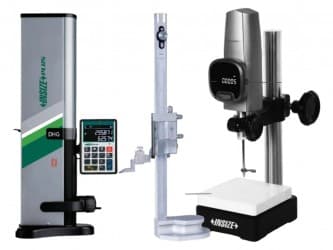Nonelectrical Properties Testing
Featured Brands
Non-electrical properties
testing refers to the assessment and measurement of various characteristics of
materials, products, or systems that do not involve electrical phenomena. It
involves the use of specialized instruments and techniques to evaluate
properties such as mechanical, physical, chemical, thermal, optical, and
environmental attributes. Here are some common types of non-electrical
properties testing:
- Mechanical Testing: This involves
evaluating the mechanical properties of materials, including tensile
strength, compressive strength, hardness, impact resistance, fatigue
resistance, and flexibility. Instruments used for mechanical testing
include universal testing machines, hardness testers, impact testers, and
fatigue testing equipment.
- Physical Testing: Physical testing
assesses properties such as density, viscosity, specific gravity, moisture
content, particle size distribution, surface roughness, and thermal
conductivity. Instruments used for physical testing include density
meters, viscometers, moisture analyzers, particle size analyzers,
profilometers, and thermal conductivity testers.
- Chemical Analysis: Chemical
analysis involves determining the chemical composition and characteristics
of substances, including elemental composition, impurities, pH, acidity,
alkalinity, and chemical reactions. Instruments used for chemical analysis
include spectroscopy instruments (such as atomic absorption spectrometers
and infrared spectrometers), titration equipment, pH meters, and
chromatography systems.
- Thermal Analysis: Thermal analysis
measures the response of materials to changes in temperature, including
properties like melting point, thermal conductivity, thermal expansion,
specific heat capacity, and heat flow. Instruments used for thermal analysis
include differential scanning calorimeters, thermogravimetric analyzers,
thermal conductivity meters, and thermal imaging cameras.
- Optical Testing: Optical testing
involves the measurement of light-related properties, such as color,
transparency, refractive index, gloss, and light transmission. Instruments
used for optical testing include colorimeters, spectrophotometers,
refractometers, gloss meters, and light transmission meters.
- Environmental Testing:
Environmental testing assesses the performance and durability of materials
and products under specific environmental conditions, including
temperature, humidity, corrosion, vibration, and impact. Instruments used
for environmental testing include environmental chambers, corrosion
testing equipment, vibration testers, and impact testers.
- Non-Destructive Testing (NDT): NDT
techniques are used to evaluate the properties and integrity of materials
or structures without causing damage. Examples of NDT methods include
visual inspection, ultrasonic testing, radiographic testing, magnetic
particle testing, and liquid penetrant testing.
Non-electrical properties
testing is crucial in industries such as manufacturing, construction,
automotive, aerospace, healthcare, and research and development. It ensures the
quality, performance, and safety of materials, products, and systems, helping
to meet regulatory standards and customer requirements. The specific tests and
instruments used depend on the nature of the properties being evaluated and the
specific industry or application involved.


.jpg&w=640&q=75)
.jpg&w=640&q=75)
.jpg&w=640&q=75)
.jpg&w=640&q=75)
.jpg&w=640&q=75)




